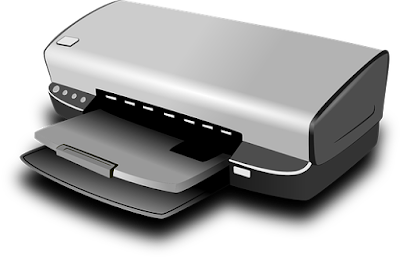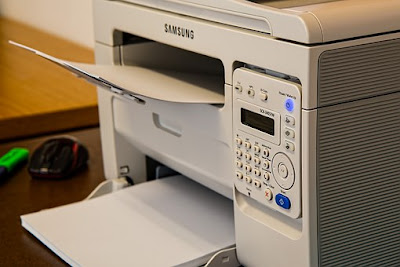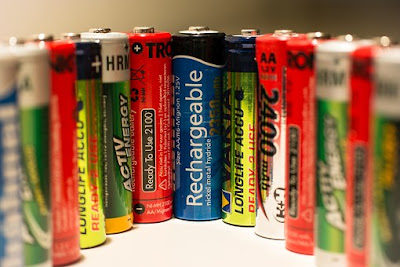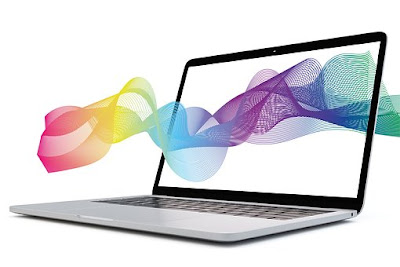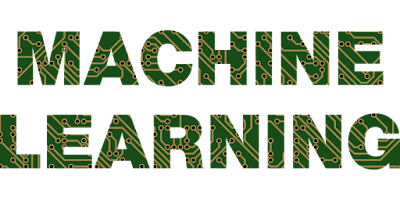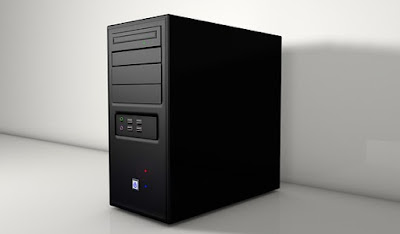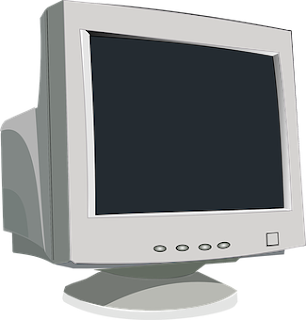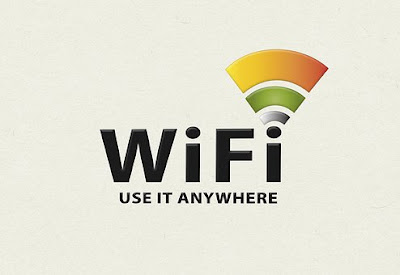Printing Machines Works | Printing Technology
Printers we've definitely use them at home and we've
probably also used it at say a work or school location you may have noticed
that if you've used princess in those two different places well the printers
look and function very differently we're going to do today is we're going to
actually dive into several different prints technologies to try and understand
how they work and how they're different printer
technology and if you have a printer at home it's probably going to be an
inkjet printer once we're done with that we'll move on to talk about laser
printers which of course is the second most common often found in workplaces to
wrap everything up we'll move on to talk about thermal printers as well as dot
matrix printers which are a little bit more historical you know a little bit
less common in our lives but at the same time are interesting pieces of
technology that bear looking at so yeah without any further ado let's jump into
our very first technology and that is the inkjet so inkjet printers wealth SS
name implies prince with a Jets of liquid ink the idea is a paper is fed under
a print cartridge the cartridge then actually deposits ink onto the paper and
yeah basically the cartridge moves along a real continuing to deposit ink from
left to right in order to go down to the next line the paper is fed up that is
very simplified principle of how an inkjet printer actually works for an inkjet
printer to print in color basically colored and gets used in fact four
different colors are used namely cyan magenta yellow and black often
abbreviated to CMYK the way in which the colors actually mix together it's
called the subtractive color model and the idea is well the more colors you mix
together the darker the result is so in fact this right here is your see your M
and your white cyan magenta and yellow when combined this actually gives us the
primaries we are familiar with and when we put them all together we get pure
black applause that doesn't happen nearly as well when we are using you know an
actual printer if you were to mix the cyan magenta and yellow colors what you
end up getting is sort of a darkish dirty brownish color instead of black
that's why an additional black color is used this gives you you know a pure a
nicer black color and as an added bonus you also save on ink
because you don't have to mix three different colors together just to get black color now your inkjet printer cannot actually Prince a lighter color it can really only either deposit a dot of ink or not deposit a dot of ink therefore to create a notion of sheet we're going to actually have to change up the density of the dots within a particular area the more dots you put close together the darker it appears whereas if you're actually have the dots far apart you get a much lighter color but these aren't the interesting things about an inkjet printer what's more interesting is how do you actually get the ink to come out of a cartridge you could have to exert some kind of pressure inside the cartridge to push that ink out and don't forget that cartridges are meant to be used and then disposed of so you don't want to actually build some intricate mechanism inside that gets thrown away each time turns out that's you very interesting solutions to this problem one method is to actually use heat a heating element actually causes the heat to vaporize that creates a huge increased pressure within the print cartridge itself and that is what actually forces a drop of ink to come out of the cartridge and then the method is to use a piezoelectric component when incurrence is actually applied to that components well it deforms and it actually creates a pressure that similarly pushes out a drop of ink some pros and cons of inkjet well in jet printers can be extremely cheap in fact many inkjet printers can even be cheaper than a hundred dollars depending on what you buy you can get pretty good quality but unfortunately inkjet does have its fair share of shortcomings in particular the cartridges extremely expensive
you know you've heard of printer ink being compared to blood printing it slow and also not really waterproof water can cause printer ink to run and smudge and that was in jets which is probably the print technology you have at home let's now switch gears to talk about the one you probably have at school or in the office believes a printer laser printers are far more interesting than their counterparts unlike in jets laser printers actually use what is known as toner which is actually powdered color pigment what's even more interesting is the way it actually prints this by static charge let's take a look at how this works first we have a rotating drum this drum is charged with static electricity then and this is where the laser comes in you shine a laser on the drum to actually remove some of the charge in certain areas as the drum continues to rotate the laser continues to shine at different parts of the drum and true selective removal of charges actually projects the entire image of whatever it is you want to print onto the surface of the drum itself when this process is done the drum is actually brought near to powder toner this toner is also given the same charge now what happens here is that only the areas that have their charges removed by the laser will actually pick up the toner since all the other areas have the same charge there will be a repulsive effect those areas will not pick up any toner so this drum with the toner step to it is now brought near to a sheet of paper or we can then do is to
put the opposite charge underneath the paper and that will cause all the toner particles to get attracted onto the paper itself of course when dan yet since the toner is still in its powdered form we also have to expose the paper to a source of heat this process is called fusing the toner actually melts onto the surface of the paper this incidentally explains why Prince coming out from a laser printer actually feels quite wop and it prints out actually looks a little glossy laser printers are capable of printing in color usually they're for drums that do the process we've just seen for each Channel see my K the two ways to finish this off either you can take turns to deposit the toner from each drum onto the paper or you can also actually deposit them directly onto a temporary surface which then actually deposits all the toner onto the paper itself so I have two strategies they both work to give you color laser print the pros and cons of using a laser printer I as follows a lease and printer can print extremely quickly however toner well it's a powder so if you spill it that's kind of a problem not only is it hard to clean up since they have very fine particles you have to actually take precautions to not breathe it in because of course that could pose a health risk and that was laser printing now kisses you even though we always talk about you know laser princess as just a printer on its own really this technology is often a component in a much larger device for example a photocopy machine you know in order for it to actually produce the results needs to actually use some kind of printing technology to do it and usually the technology used is laser printing many office princess try to sort of follow the same model by including some kind of scanning capability and that is in fact why you will often find some kind of scanning ability mixed in on the same device that also has a printer usually a laser printer now let's move on to thermal printing using heats to print this one is quite interesting since you're actually just using heat to print what is special here is not the printer itself but the people that is be used a specific kind of paper called thermal paper needs to be used in a thermal printer the idea is this on the surface of the thermal paper they're basically multiple different substances which are sort of mixed in well among each other the print head is essentially just a heating element which well heats these substances on a surface of the paper the heat will cause these two types of substances to melt and when they're in their liquid form they can interact with each other to create a dark spot that's essentially how thermal printing works as your print head moves along the surface of the paper
selectively heating certain areas you actually create your pattern of dark and light spots thus creating your image now thermal printing isn't all that common today you know especially in homes but there are some notable applications namely in receives as well as the fabled Game Boy printer now all this may seem a little bit counterintuitive color thermal printers do actually exist though this requires you to sort of jump through some hoops one notable method actually uses multiple layers which can melt at different temperature levels what you see here is a cross section of the paper so imagine I sort of slice the paper and we're looking at this slice the edge as the print head actually comes by if it applies high heat it will actually cause only one particular color to show up if we sort of reduce it to medium heat then that will cause a different color to show up and again for low heat if we sort of mix and match different combinations of heat levels at the same spot we can then actually create well all the different colors by using a combination of different heat levels you can essentially produce a color image using a special paper like this here are some pros and cons of thermal printing first and foremost there is no issue of running out of ink
Since you're not using ink or toner of any sort since you don't have to actually swap out an ink cartridge well that needs to be less changeable parts and as a result there is surface area for wear and tear you can also get reasonably fast prints from a thermal printer some disadvantages is that thermal prints tend to fade after some time and you have to sort of protect them from being heated otherwise of course the same reaction is going to occur and you're going to destroy your print so that was thermal printing let's now go even further back in time to take a look at a technology that is barely used these days namely dot matrix printing now the design of a dot matrix printer is very similar to that of a typewriter and we'll see why that is in a minute a dot matrix printer is also quite similar to an inkjet in a sense then well the paper feeds in the same way and hit moves in the same way as well the idea is you have a prince head and in front of it is an inked ribbit when you want a dot on a paper essentially what the print hit does is it fires a little pin forward and as a result actually presses the ribbon against your paper since the ribbon has ink on it well that is actually going to deposit some ink onto the surface of the paper just like inkjet the print head moves left and right the paper gets fed upwards and as a result well you get your prints some advantages and disadvantages is that dot matrix printers are very cheap you can even sort of just leave them there and they won't dry out and I've course back in the day when people use carbon paper to produce what is known as carbon copies well you can actually use a dot matrix printer to produce a carbon copy for a very simple reason that a dot matrix printer prints by producing and impacts on a paper of course one disadvantage is that dot matrix printers are slower than noisy and for those that prints in color the quality isn't great and there you go that was for printing technologies you know starting from the most common today to those that are you know more historical in nature hopefully...
because you don't have to mix three different colors together just to get black color now your inkjet printer cannot actually Prince a lighter color it can really only either deposit a dot of ink or not deposit a dot of ink therefore to create a notion of sheet we're going to actually have to change up the density of the dots within a particular area the more dots you put close together the darker it appears whereas if you're actually have the dots far apart you get a much lighter color but these aren't the interesting things about an inkjet printer what's more interesting is how do you actually get the ink to come out of a cartridge you could have to exert some kind of pressure inside the cartridge to push that ink out and don't forget that cartridges are meant to be used and then disposed of so you don't want to actually build some intricate mechanism inside that gets thrown away each time turns out that's you very interesting solutions to this problem one method is to actually use heat a heating element actually causes the heat to vaporize that creates a huge increased pressure within the print cartridge itself and that is what actually forces a drop of ink to come out of the cartridge and then the method is to use a piezoelectric component when incurrence is actually applied to that components well it deforms and it actually creates a pressure that similarly pushes out a drop of ink some pros and cons of inkjet well in jet printers can be extremely cheap in fact many inkjet printers can even be cheaper than a hundred dollars depending on what you buy you can get pretty good quality but unfortunately inkjet does have its fair share of shortcomings in particular the cartridges extremely expensive
you know you've heard of printer ink being compared to blood printing it slow and also not really waterproof water can cause printer ink to run and smudge and that was in jets which is probably the print technology you have at home let's now switch gears to talk about the one you probably have at school or in the office believes a printer laser printers are far more interesting than their counterparts unlike in jets laser printers actually use what is known as toner which is actually powdered color pigment what's even more interesting is the way it actually prints this by static charge let's take a look at how this works first we have a rotating drum this drum is charged with static electricity then and this is where the laser comes in you shine a laser on the drum to actually remove some of the charge in certain areas as the drum continues to rotate the laser continues to shine at different parts of the drum and true selective removal of charges actually projects the entire image of whatever it is you want to print onto the surface of the drum itself when this process is done the drum is actually brought near to powder toner this toner is also given the same charge now what happens here is that only the areas that have their charges removed by the laser will actually pick up the toner since all the other areas have the same charge there will be a repulsive effect those areas will not pick up any toner so this drum with the toner step to it is now brought near to a sheet of paper or we can then do is to
put the opposite charge underneath the paper and that will cause all the toner particles to get attracted onto the paper itself of course when dan yet since the toner is still in its powdered form we also have to expose the paper to a source of heat this process is called fusing the toner actually melts onto the surface of the paper this incidentally explains why Prince coming out from a laser printer actually feels quite wop and it prints out actually looks a little glossy laser printers are capable of printing in color usually they're for drums that do the process we've just seen for each Channel see my K the two ways to finish this off either you can take turns to deposit the toner from each drum onto the paper or you can also actually deposit them directly onto a temporary surface which then actually deposits all the toner onto the paper itself so I have two strategies they both work to give you color laser print the pros and cons of using a laser printer I as follows a lease and printer can print extremely quickly however toner well it's a powder so if you spill it that's kind of a problem not only is it hard to clean up since they have very fine particles you have to actually take precautions to not breathe it in because of course that could pose a health risk and that was laser printing now kisses you even though we always talk about you know laser princess as just a printer on its own really this technology is often a component in a much larger device for example a photocopy machine you know in order for it to actually produce the results needs to actually use some kind of printing technology to do it and usually the technology used is laser printing many office princess try to sort of follow the same model by including some kind of scanning capability and that is in fact why you will often find some kind of scanning ability mixed in on the same device that also has a printer usually a laser printer now let's move on to thermal printing using heats to print this one is quite interesting since you're actually just using heat to print what is special here is not the printer itself but the people that is be used a specific kind of paper called thermal paper needs to be used in a thermal printer the idea is this on the surface of the thermal paper they're basically multiple different substances which are sort of mixed in well among each other the print head is essentially just a heating element which well heats these substances on a surface of the paper the heat will cause these two types of substances to melt and when they're in their liquid form they can interact with each other to create a dark spot that's essentially how thermal printing works as your print head moves along the surface of the paper
selectively heating certain areas you actually create your pattern of dark and light spots thus creating your image now thermal printing isn't all that common today you know especially in homes but there are some notable applications namely in receives as well as the fabled Game Boy printer now all this may seem a little bit counterintuitive color thermal printers do actually exist though this requires you to sort of jump through some hoops one notable method actually uses multiple layers which can melt at different temperature levels what you see here is a cross section of the paper so imagine I sort of slice the paper and we're looking at this slice the edge as the print head actually comes by if it applies high heat it will actually cause only one particular color to show up if we sort of reduce it to medium heat then that will cause a different color to show up and again for low heat if we sort of mix and match different combinations of heat levels at the same spot we can then actually create well all the different colors by using a combination of different heat levels you can essentially produce a color image using a special paper like this here are some pros and cons of thermal printing first and foremost there is no issue of running out of ink
Since you're not using ink or toner of any sort since you don't have to actually swap out an ink cartridge well that needs to be less changeable parts and as a result there is surface area for wear and tear you can also get reasonably fast prints from a thermal printer some disadvantages is that thermal prints tend to fade after some time and you have to sort of protect them from being heated otherwise of course the same reaction is going to occur and you're going to destroy your print so that was thermal printing let's now go even further back in time to take a look at a technology that is barely used these days namely dot matrix printing now the design of a dot matrix printer is very similar to that of a typewriter and we'll see why that is in a minute a dot matrix printer is also quite similar to an inkjet in a sense then well the paper feeds in the same way and hit moves in the same way as well the idea is you have a prince head and in front of it is an inked ribbit when you want a dot on a paper essentially what the print hit does is it fires a little pin forward and as a result actually presses the ribbon against your paper since the ribbon has ink on it well that is actually going to deposit some ink onto the surface of the paper just like inkjet the print head moves left and right the paper gets fed upwards and as a result well you get your prints some advantages and disadvantages is that dot matrix printers are very cheap you can even sort of just leave them there and they won't dry out and I've course back in the day when people use carbon paper to produce what is known as carbon copies well you can actually use a dot matrix printer to produce a carbon copy for a very simple reason that a dot matrix printer prints by producing and impacts on a paper of course one disadvantage is that dot matrix printers are slower than noisy and for those that prints in color the quality isn't great and there you go that was for printing technologies you know starting from the most common today to those that are you know more historical in nature hopefully...


